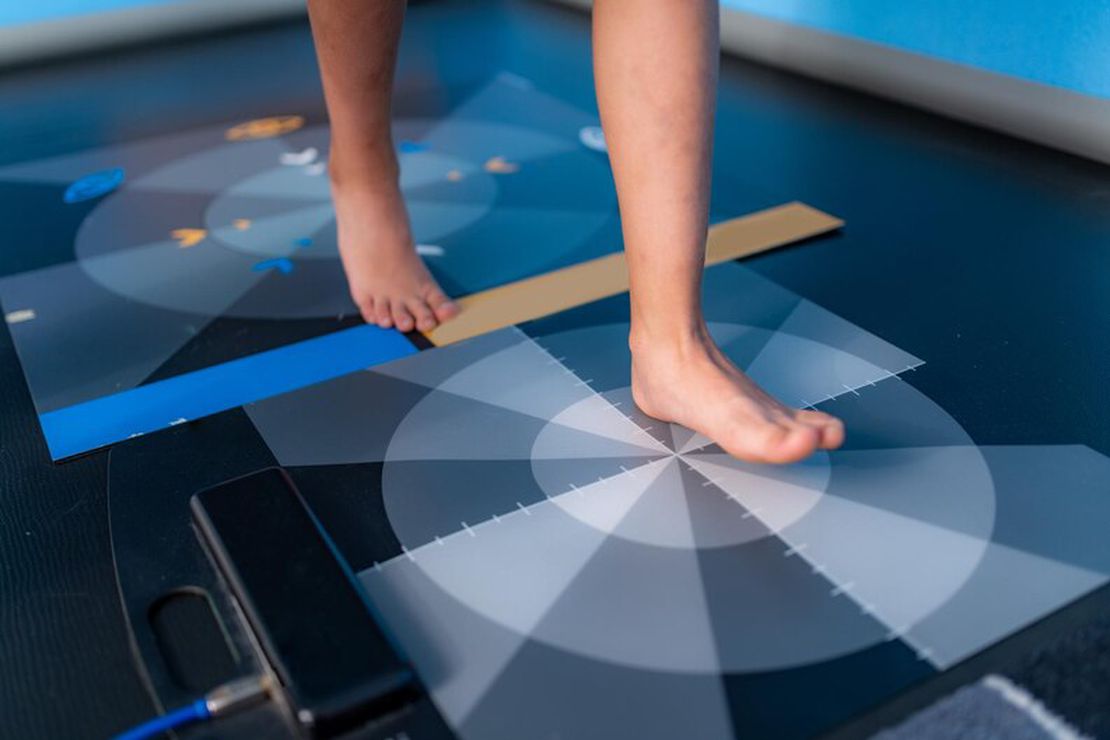Diabetic foot is one of the most serious complications in diabetes patients. This chronic disease affects the entire body and can lead to diabetic foot problems that often progress unnoticed. Wounds, infections, and tissue loss that occur in the feet of diabetic patients can cause serious consequences if left untreated. Therefore, diabetic foot examinations are vital in managing diabetes and should be a regular health routine.
Diabetic Foot: How Does Diabetes Affect Foot Health?
Prolonged high blood sugar levels damage nerve endings and blood vessels. This leads to two important problems called neuropathy and ischemia.
- Neuropathy causes loss of sensation in the feet. A patient may not notice a wound, blister, or crack that forms on their foot.
- Ischemia means impaired blood circulation. When circulation decreases, even a small wound cannot heal and the risk of infection increases.
When these two factors combine, diabetic foot wounds can progress rapidly and create the risk of amputation.
📖 Related Article: Learn more about neuropathy-related foot pain and natural supportive methods in our article on Herbal Treatment for Foot Pain in Diabetics.

Why Are Diabetic Foot Examinations Vitally Important?
Diabetic foot examinations enable preventive measures before diabetic foot problems arise.
In other words, early diagnosis and regular monitoring is the most effective way to prevent diabetic foot disease.
1. Early Diagnosis Prevents Problems from Growing
Even a small callus, ingrown toenail, or crack can turn into an infection in a diabetic individual. Regular examination ensures that such problems are detected and treatment begins immediately.
2. Infection and Wound Risk Decreases
Since diabetic patients often experience loss of sensation, they may not notice a wound on their foot. Routine examinations detect unnoticed wounds early and prevent infections from progressing.
📖 Related Articles: Learn more about wound formation and early diagnosis in our articles on Current Treatment Methods for Diabetic Foot Wounds and Diabetic Foot and Chronic Foot Wounds: Treatment and Precautions.
3. Circulation Disorders Are Monitored
During diabetic foot examination, the vascular structure is also evaluated. Circulation disorders that lead to diabetic foot problems can be detected early through symptoms such as coldness, pulse loss, or paleness in skin color. These symptoms, which are early indicators of peripheral vascular disease, are important for preventing diabetic foot complications. In such cases, appropriate vascular treatment is planned for the patient.
4. Amputation Risk Decreases
Research shows that amputation risk decreases by more than 50% in diabetic patients who regularly undergo diabetic foot examinations. When diabetic foot problems are detected early, they can be treated before advancing to more serious stages. This protects not only the patient’s physical but also psychological quality of life and helps prevent diabetic foot complications.
5. Proper Foot Care Education Is Provided
During examinations, the specialist physician or podologist teaches the patient proper foot care.
These include:
- Daily foot washing and drying habits,
- Moisturizer use,
- Appropriate shoe selection,
- Nail cutting techniques.
This way, the patient learns to perform their own care correctly.
📖 Related Article: Learn more about early recognition of diabetic foot symptoms and foot care in our article on Symptoms of Diabetes Affecting the Feet.
How Often Should Diabetic Foot Examinations Be Performed?
Generally, it is recommended that individuals with diabetes have a comprehensive foot examination at least once a year.
However, for patients with neuropathy, circulation disorders, or a previous history of diabetic wounds, this period should be every 3 to 6 months.
During examinations:
- Sensory testing (monofilament test),
- Pulse and circulation assessment,
- Skin, nail, and deformity examination are performed.
If necessary, advanced tests such as X-ray, doppler ultrasound, or vascular imaging can also be applied to the patient.
📖 Related Article: Learn more about treatment processes and examinations in our article on Diabetic Foot Treatment: Early Diagnosis and Proper Approach.
How to Perform Diabetic Foot Examination at Home?
Daily observation at home is as important as professional doctor examination to prevent diabetic foot problems. Early detection of diabetic foot symptoms increases treatment success.
Every day:
- The sole of the foot, between the toes, and heel area should be carefully examined,
- If diabetic foot wounds, redness, blisters, or color changes are noticed, a diabetic foot specialist should be consulted immediately.
To reduce diabetic foot risk, walking barefoot, tight shoes, and high heat should be avoided.

📖 Related Articles: Learn about home wound care methods in our diabetic foot treatment articles and Maggot-Infested Diabetic Foot: What Is It, Why Does It Happen, How to Prevent It? for ways to prevent advanced infections.
Diabetic Foot: Prevention Is Easier Than Treatment
Diabetic foot examinations are not just an examination, but one of the most important steps taken for preventing diabetic foot problems and maintaining quality of life. When diabetic foot disease is detected early, treatment success increases and complications can be prevented.
Every diabetic foot symptom detected early prevents major diabetic foot complications that may occur in the future.
Prof. Dr. Aytaç Çetinkaya, in clinical studies conducted for many years in the field of diabetic foot, emphasizes that early diagnosis and regular diabetic foot examination significantly increase patients’ quality of life.
Living with diabetes and preventing diabetic foot problems is possible; but with proper monitoring and regular diabetic foot examinations.
Detect early, take your precautions. Taking healthy steps is in your hands.




